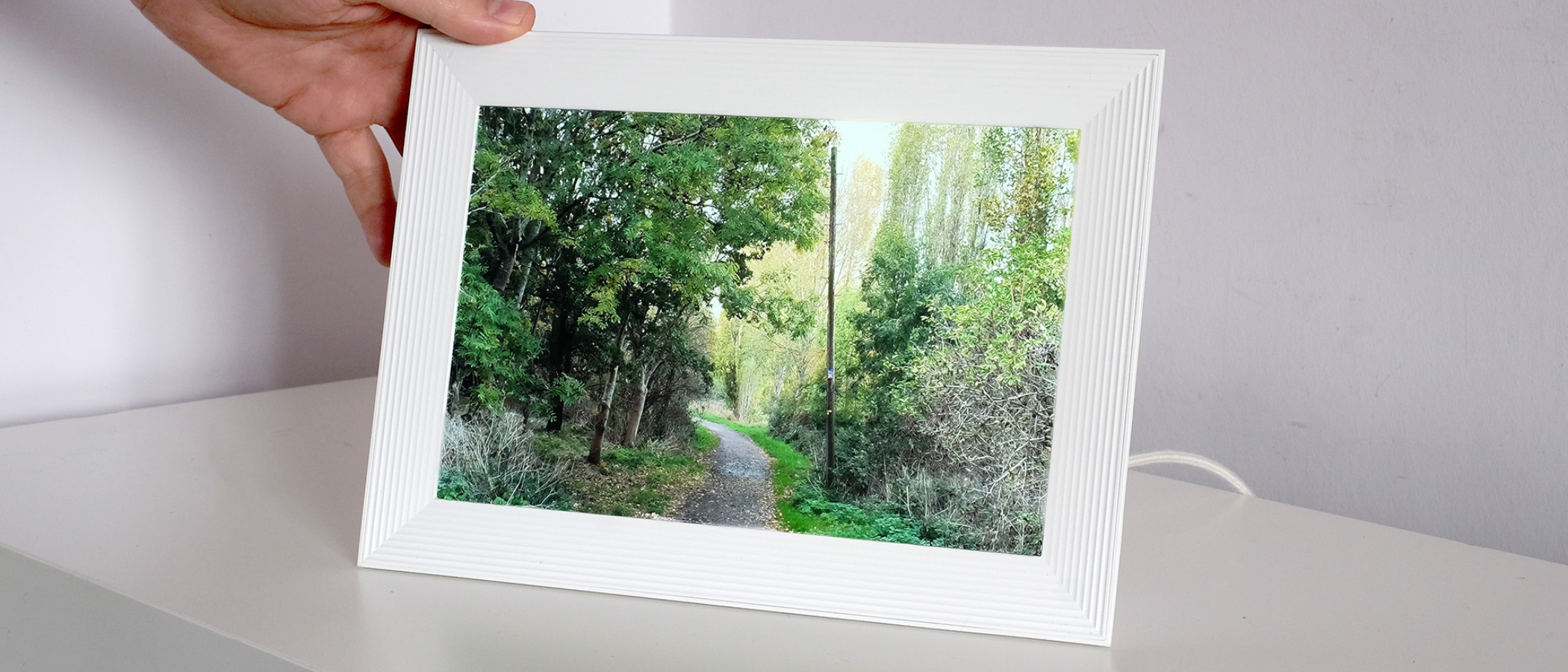TechRadar Verdict
It may be a lower-end model in Aura’s line-up, but the Carver is still a classier photo frame than most rivals. Some of its quirks can be restrictive, but the straightforward software makes it simple to use. If you don’t mind its relatively low resolution, it’s bliss to live with.
Pros
- +
Bright display with auto backlight
- +
Looks good for an 800p screen
- +
Simple and slick software
Cons
- -
Can only sit in landscape orientation
- -
No support for albums
- -
Needs consistent Wi-Fi
- -
Carver Luxe is sharper, not much pricier
Why you can trust TechRadar
Two-minute review
The Aura Carver is a 10-inch photo frame which feels less like a dressed-up Android tablet than most of its rivals. For the most part, that’s a good thing. This is one of the most refined affordable frames you’ll find online, which means it's fully-deserving of its place in our guide to the best digital photo frames.
It’s worth bearing in mind that it costs jut a little less than the Aura Carver Luxe. The two look similar, but the Luxe has a much higher screen resolution. At the time of writing, it actually costs the same as the standard Carver online. Even without a reduction, we’d be happy to pay the extra $20/£20 for higher pixel density.
However, we can also appreciate plenty of photo frame buyers won’t want to. Luckily, photos still look great on the standard Aura Carver. Color is good, contrast is decent enough, and the display has a semi-matte finish that softens reflections in a way most other photo frames don’t.
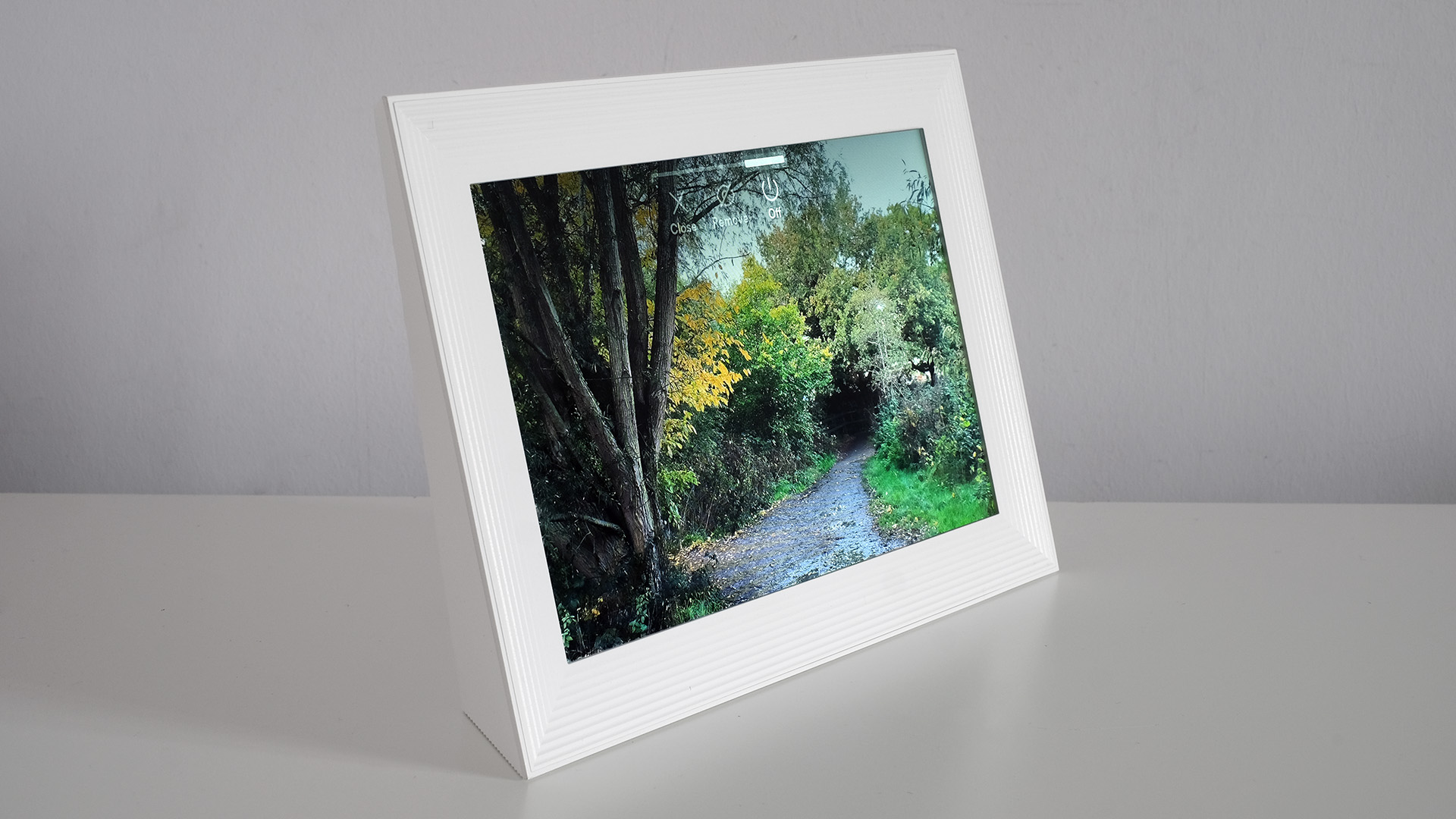
One of the major highlights is how this photo frame operates. The Aura Carver automatically changes its brightness level to match ambient light levels, and turns itself off when the lights go out in a room. It can also get very bright, handy if you want a photo frame to sit near a window.
It has the slickest software and interface of the photos frames we’ve tried recently, too. The Aura Carver doesn’t have a touchscreen, though, which may come as a surprise. Instead, you use a little touch panel up top to flick between photos, with most other options available through the phone app. Friends and family can also send photos to the Aura Carver, although they will have to download the Aura app to get involved.
There are certain quirks to how the Aura Carver operates. It can only be positioned in landscape orientation, which some will find restrictive. There are also very few settings which can be manually adjusted. But if you find the idea of a straightforward and stylish photo frame appealing, there’s plenty to like. Overall, the Aura Carver ranks highly among our pick of the best digital photo frames.
Aura Carver: design
We’ve reviewed Aura photo frames before. The Aura Carver is one of the company’s lower-cost options, but it features a similar style to what we’ve seen in other models. Rather than aiming to look like a classic picture frame, it adopts a distinctive style with a heavily embossed border.
Sign up for breaking news, reviews, opinion, top tech deals, and more.
The frame itself quite thick. This border is plastic, and feels like it, but the Aura Carver does have a reassuring heft which isn’t found on most cheaper photo frames. It also relies on that thickness to prop itself up: there’s no pull-out or attachable stand. Instead, it stands by itself on its thicker base, meaning the footprint is usefully small.
However, this style also means the Carver can only sit one way: landscape. This is fine if you’re planning to mainly display landscape photos. But if you’re looking to show off pics of people and places shot in portrait, you don’t want a Carver. We suggest looking at an Aura Mason instead.
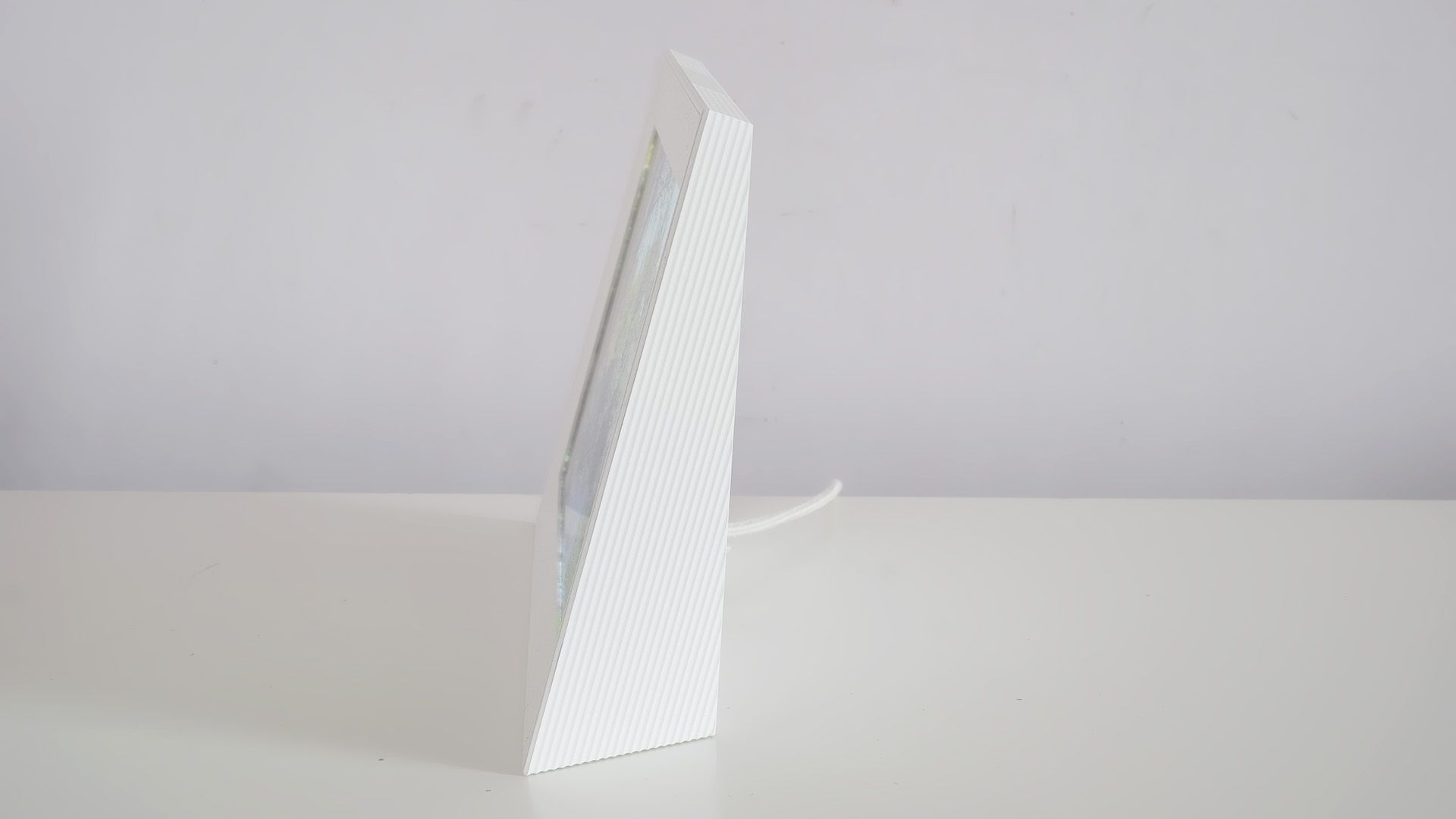
The Aura Carver doesn’t have a super sharp screen, either. The 10.1-inch IPS LCD panel has a 1280 x 800 resolution, which is lower than several of Aura’s other models. If you want to look appreciate the fine details of your images, the Carver Luxe, Mason or Mason Luxe might be a better bet. But we still think the standard Carver gets by just fine for the way most people will use a photo frame.
Images still look sharp if you look from arm’s length. While high-res screens are often talked about in the context of images, it’s actually text that shows up a lower resolution. And there’s just not that much text on display when using the Aura Carver.
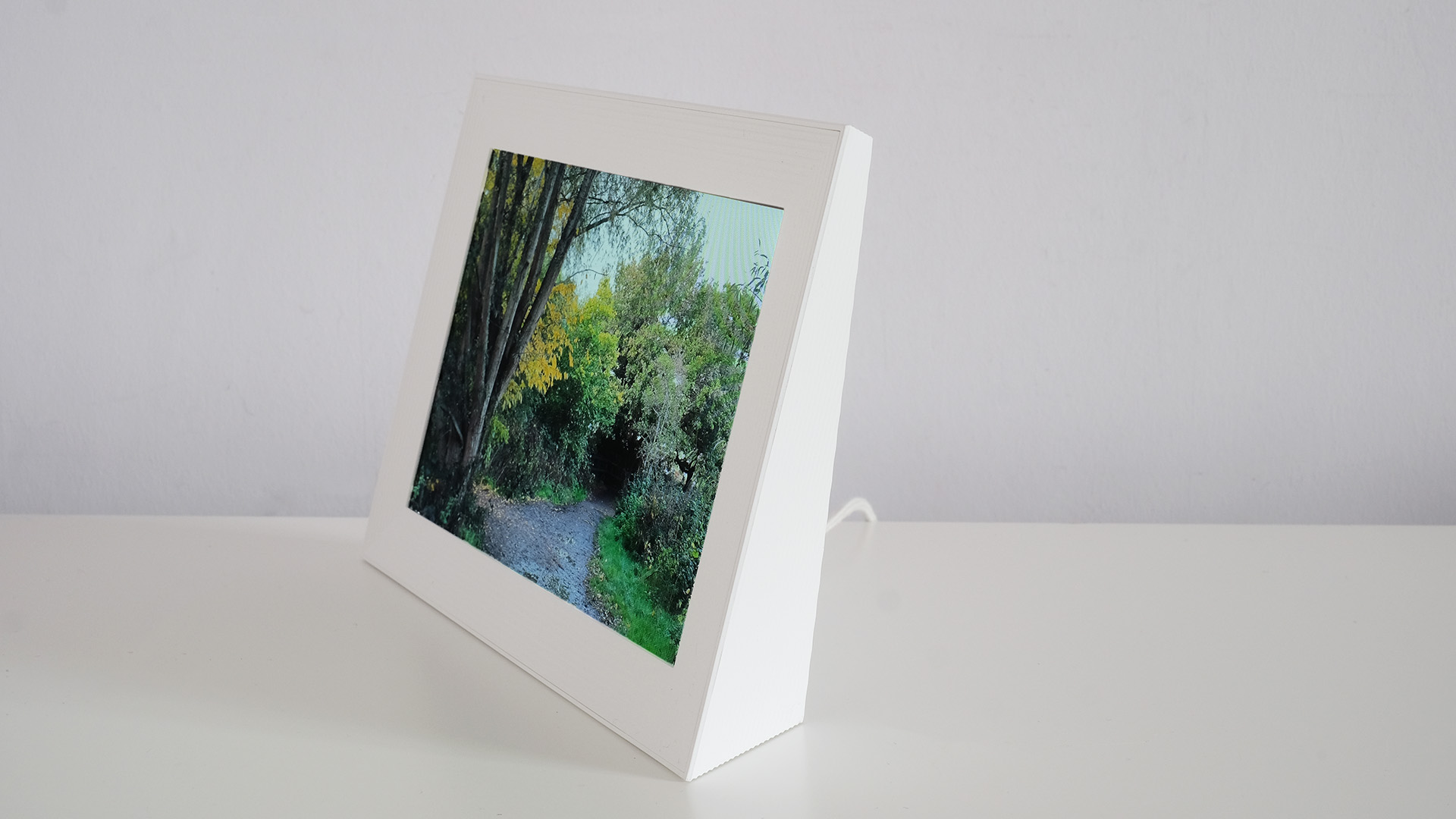
This display doesn’t have a full matte finish, but it does soften refections in a way that makes photos look more like printed pictures. Of course, the odd thing here is that picture frames are typically topped with glass, or plastic that looks like glass, so this move arguably makes it seem less like a a traditional picture frame.
The Aura Carver’s screen is also impressively bright. Where most photo frames we’ve tested will reach around 220-250 nits, the Carver can hit 445 nits, like a decent tablet at maximum brightness. You won’t often see this kind of brightness, though, because the Carver automatically adjusts its brightness to match ambient conditions. And you can’t manually control brightness, even if you want to.
Aside from the relatively low resolution, there’s only one other issue to speak of. Blacks can look a little blue at some extreme angles, thanks to the style of screen panel used. Aside from this, viewing angles are excellent, and colors look vibrant but natural.
Aura Carver: usability
Aura aims to make the Carver simple to use. You can’t slot in a memory card, or attach a USB cable to your phone to transfer images. There’s just the power connector on the back, and a speaker. This is used when playing videos, with clips of up to 30 seconds supported.
You set up the Carver using the Aura app, which is where you control pretty much every element of the photo frame. It’s common for photo frames to have their own menu system, but this one keeps things stripped back.
On the frame itself, your only control is through a little touch sensitive strip on the top. You can tell where it is because it’s super-smooth, while the surrounding plastic is roughened. Flick left and right to switch images, hold a finger down to either remove a photo or power off the Aura Carver.
The phone app is quite straightforward, too. You can’t create playlists or albums. You just upload images to your Aura, and can then remove them from the “slideshow” – or get rid of them entirely further down the line.
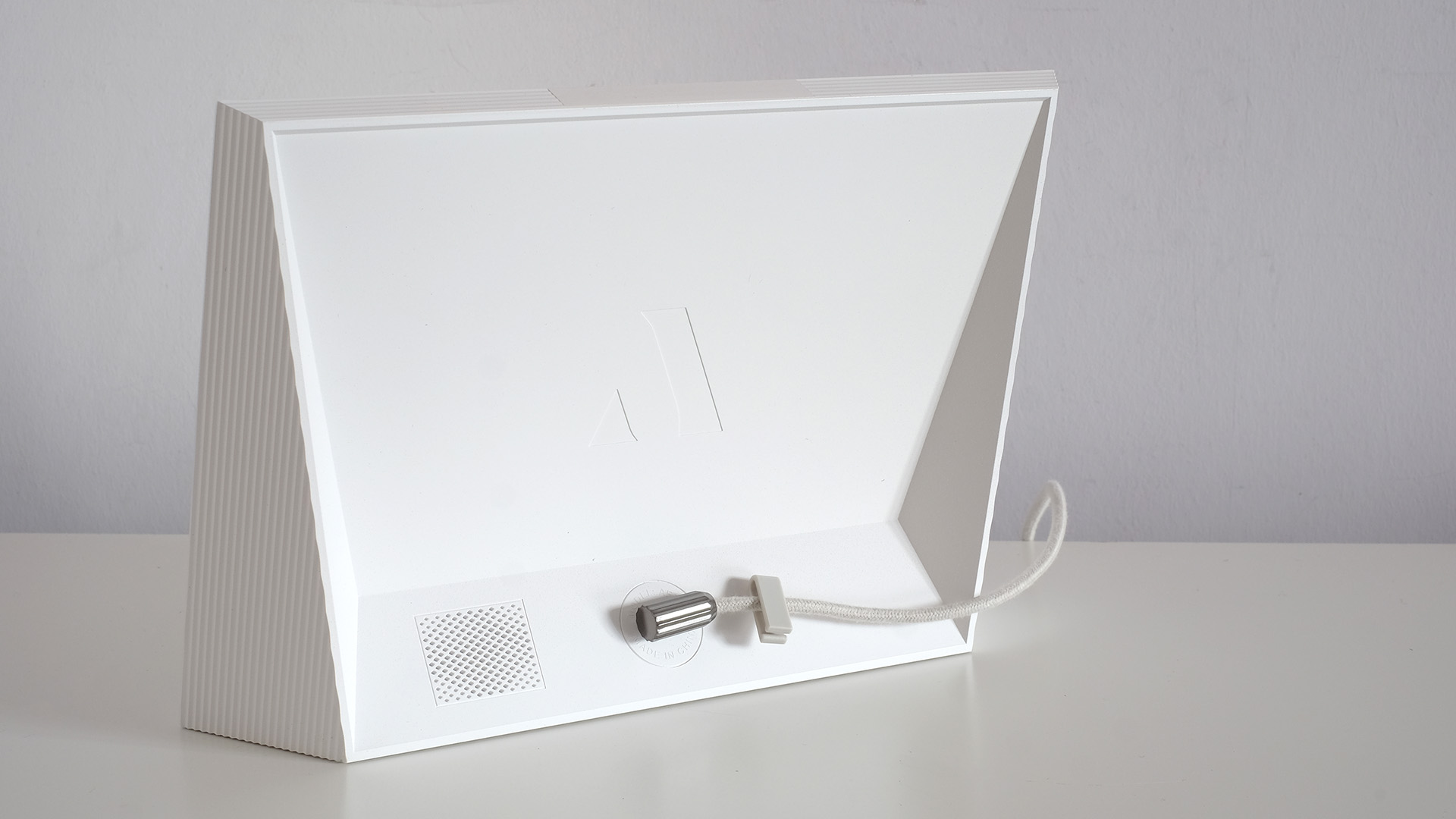
Your two slideshow options are how long to show each photo for, from 15 seconds to 24 hours, and whether to shuffle images or display them in chronological order. That’s when they were taken, not when they were added. You can also schedule when to power the frame on and off, if you don’t want to rely on its auto-sleep function.
This is a real no-fuss, easy-to use photo frame. However, there are some quirks to how it operates. The Carver has no official internal storage, and streams photos as required from your Wi-Fi, so it needs to be connected all the time. This shouldn’t matter in most situations, but it may be a total deal-breaker if your connection is inconsistent.
Other people can be invited to add photos to your library. They’ll have to download the Aura app to do so, but once they’re in, they can use a special email address to fire over pics. The home page of the app shows a feed of recently added images, and folks can “send some love” or add a comment. Of course, that’s likely to be more appealing to the person who owns the Carver than other friends and family.
Should I buy the Aura Carver?
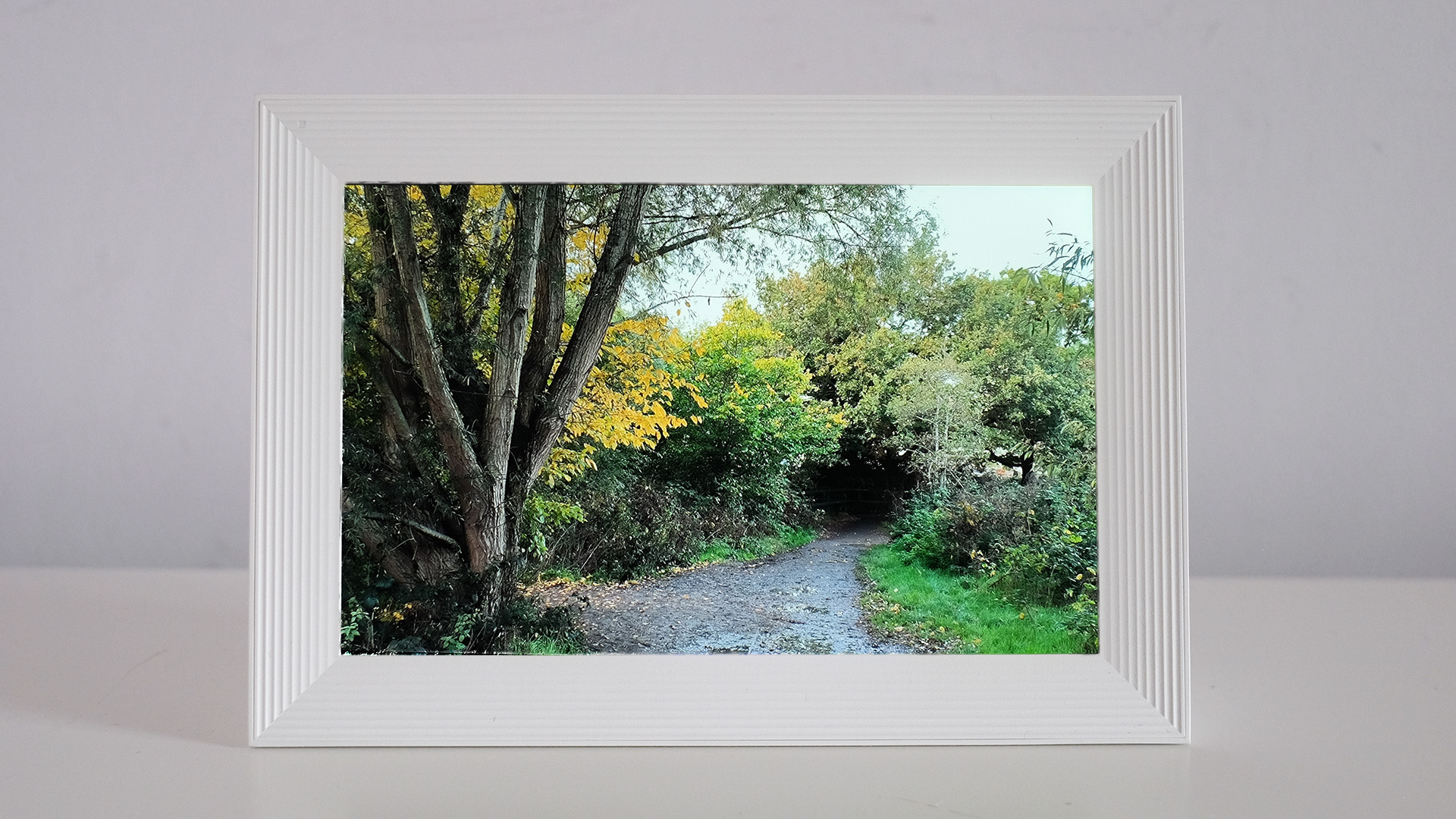
Buy it if...
You want a hassle-free setup
The Aura Carver will automatically adjust brightness to suit the room it’s in. Turn the lights off at night and it will enter sleep mode, making it one of the easiest photo frames to run. You can largely just set it up and let it roll.
You don’t want to pay a subscription
There’s no subscription or paid-for upgrade service here. The Aura Carver comes with unlimited space for images on Aura’s servers. You can also play videos up to 30 seconds long, at no extra cost.
You like your photos to look good
It’s quite low-end by Aura’s standards, but this photo frame has an above-average screen. Colors are pleasant, viewing angles are good and the display can go super bright – although will only do so in very bright rooms.
Don't buy it if...
You want total control
The Aura Carver is quite inflexible compared to some competitors. You can’t manually control its brightness or create albums. There’s also very little control from the frame itself, beyond removing images and flicking between them.
You have patchy Wi-Fi
Because it streams data from Aura’s servers, the Carver requires a constant Wi-Fi connection. While this will be fine for most households, it does mean the photo frame will stop working if your internet goes down, or there’s an issue at Aura’s end.
You’d prefer a portrait frame
The Carver is a landscape photo frame that’s only designed to sit in one orientation. Even if you try to prop it up in portrait, the screen won’t rotate to match. So if most of your images are shot in portrait, you’ll be better served by a different frame.

Andrew is a freelance journalist and has been writing and editing for some of the UK's top tech and lifestyle publications including TrustedReviews, Stuff, T3, TechRadar, Lifehacker and others.
